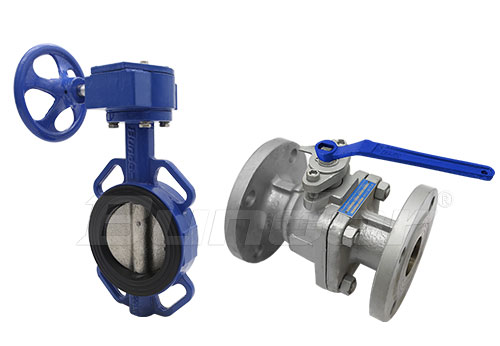
Difference 1: The cut-off method is different
The butterfly valve relies on the butterfly plate, and the pipeline will not flow if it is spread out and sealed; the ball valve blocks the channel through the ball to realize the cut-off of the pipeline.
Difference 2: The structure is different
Butterfly valve is composed of valve body, valve seat, valve plate, valve stem, all accessories are exposed outside. The ball valve is composed of valve body, valve core and valve stem, and only some parts re exposed outside. It can be seen that the sealing performance of the butterfly valve is not as good as that of the ball valve. Speaking of tightness, butterfly valves are divided into soft sealing and hard sealing. Butterfly valve structure is relatively simple, can only be used in low pressure environment, the highest pressure is only 64 kg, while the ball valve can reach up to 100 kg.
Difference 3: The working principle is different
Butterfly valve is a kind of valve that uses a disc type opening and closing member to reciprocate about 90° to open, close or adjust the flow of the medium. It has a good function of adjusting the flow and is one of the fastest-growing valve varieties. The ball valve has a 90-degree rotation action, just because its opening and closing part is a sphere, it can be opened or closed only by operating a 90-degree rotation, which is most suitable for switching. But now the V-shaped ball valve can be used to regulate or control the flow.










